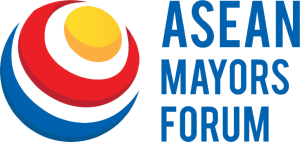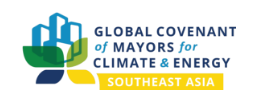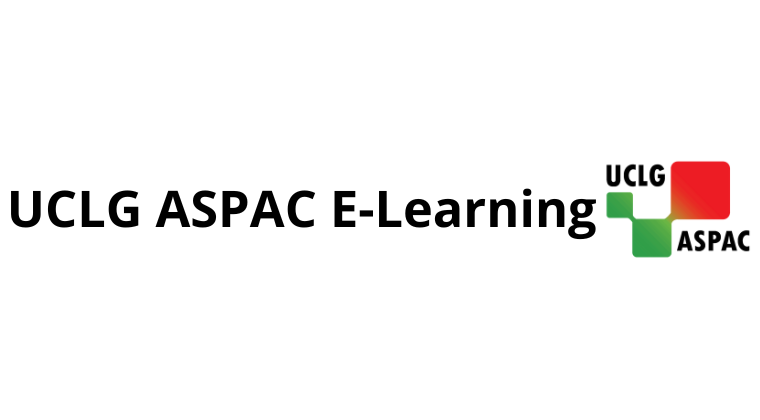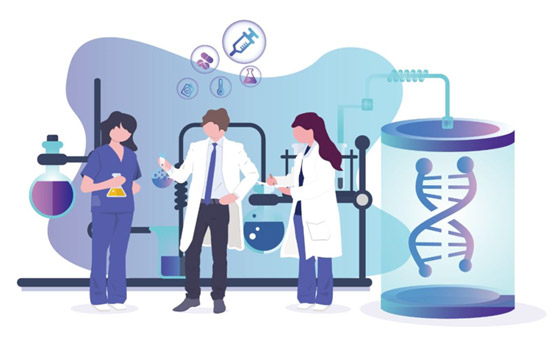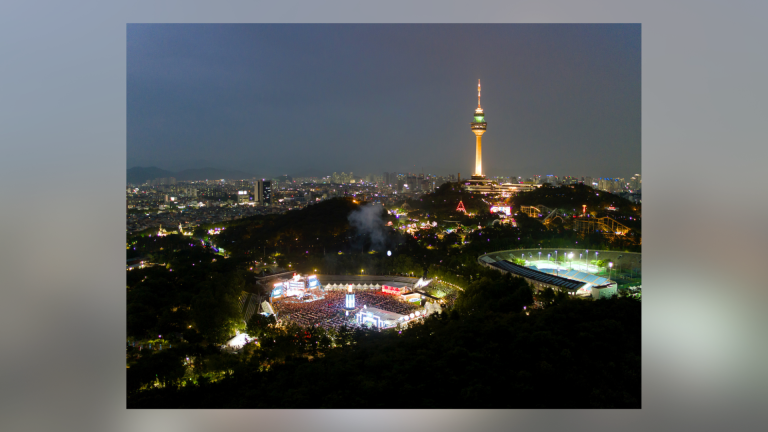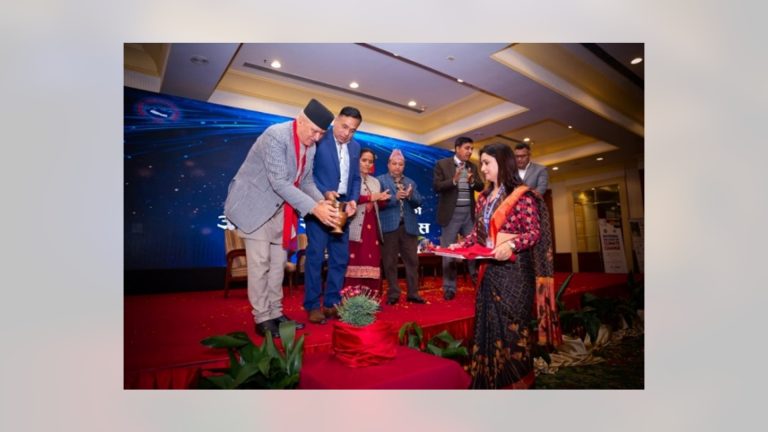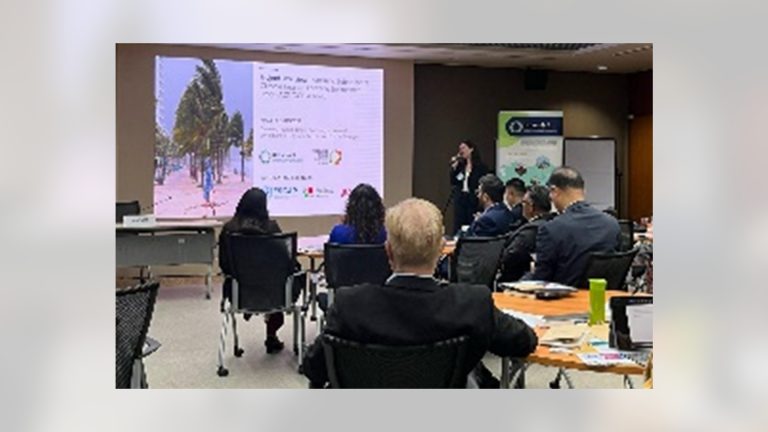Since the beginning of 2020, China has been facing the battle against COVID-19 (or novel coronavirus). Instead of gathering with relatives and friends to celebrate the festive Chinese New Year, the 1.4 billion Chinese stayed at home and avoided gatherings in their efforts to prevent the spread of COVID-19 until the situation is under control. The epicenter of the outbreak is located in Wuhan City, central China’s Hubei Province, an active member of UCLG ASPAC. This city is also a hub for people and transportation across China. Located more than one thousand kilometers away from Wuhan, Guangzhou City, another active member of UCLG ASPAC, is a metropolis with more than 150 million permanent residents and has become a major destination of numerous migrants and foreigners. Guangzhou city has taken multi-faceted actions to prevent and control the epidemic caused by COVID-19.
Guangzhou-based and highly experienced medical professionals are fighting against COVID-19 at the frontline and in the labs.
Guangzhou has an experience in responding to the SARS virus arising in 2003. Adopting the principle of centralised treatment, the city has designated nine hospitals to treat local patients. In addition, each of the city’s eleven districts has allocated at least one medical observation point with 200 beds to provide supportive care. Those infected with COVID-19, either confirmed or suspected, could receive appropriate care to treat and relieve symptoms.
Guangzhou City, particularly the Guangzhou Center for Disease Control and Prevention, has also joined the nation-wide efforts, leading its counterparts to issue the Protection Guidelines for Friends from Wuhan and the Public Health Protection Guidelines for Guangzhou Citizens. A total of 128 medical staff from nine top Guangzhou-based hospitals joined the frontline physicians in Wuhan to treat the exponentially increasing number of patients. They are the first medical team that headed for Wuhan in their mission to contain the highly contagious virus. Some of these heroic medical staff have experience in dealing with SARS back in 2003.
Guangzhou medical system has been fully mobilised to achieve technological breakthroughs in fighting against the disease. Dr. Zhong Nanshan, China’s top respiratory expert and a prominent academician of Chinese Academy of Engineering, spearheaded the efforts against SARS seventeen years ago and this time against COVID-19. The Guangzhou-based medical team has also worked with both local and Wuhan specialists to share their knowledge on critical treatment for the patients of COVID-19. Medical institutes, such as Guangzhou Laboratory of Regenerative Medicine and Health, has focused their research on rapid detection and diagnosis. At the end of January, a test kit was successfully developed to detect COVID-19 at normal temperature within a significantly shorter period of 30 minutes.
On 10 February 2020, a research team led by the State Key Laboratory of Respiratory Diseases of Guangzhou Medical University successfully isolated a new strain of coronavirus from a fecal swab specimen of a patient, providing important information for the disease prevention and control. To our excitement, at mid-February, Dr. Zhong Nanshan and his team have discovered that Chloroquine Phosphate could be effectively used to treat the symptoms of COVID-19.
Guangzhou authority plays an active role in implementing prevention and control measures through public outreach and engagement.
Guangzhou is the capital city of Guangdong province. Guangdong authority has activated first-level public health emergency response to the epidemic. Since 23 January 2020, Guangdong authority activated first-level public health emergency response to the epidemic. Each city in the province including Guangzhou has tried their best to curb the spread of COVID-19. The objective is two-pronged: to prevent transmissions both from within and outside the city.
To this end, Guangzhou authority has adopted several effective working mechanisms. Here are four highlights of the prevention and control measures.
1. Establishment of three monitoring networks to timely identify infected/suspected cases and those who have close contact with the patients.
To ensure prompt and targeted quarantine and control, Guangzhou established three monitoring networks: quarantine inspection on intercity transportation, quarantine inspection on urban transport, and temperature check in public spaces. For intercity transportation, people traveling through highway stations, Baiyun International Airport, railway stations, and ports should check their body temperature at the checkpoints. For urban transportation, each metro or bus passenger should get their body temperature checked and must wear a mask.
2. Communities’ active role in identifying cases and protecting residents.
In Yuexiu District, each community has formed a working group to extensively identify COVID-19 cases. The working group comprises community health worker, community police officer, and the residents’ committee staff. They monitor the body temperature of those who have returned from outside Guangzhou and placed under the 14-day quarantine on a daily basis.
For parcel delivery services, the items should be placed at the designated areas for residents to collect, in order to minimise the transmission by curbing the population flow. Guangzhou further announced on 7 February 2020 that residents and their vehicles are restricted from entering into the residential block/village where they do not reside in. This restriction also applies, but is not limited, to couriers and food deliverers.
3. Promoting transparency and efficiency of epidemic prevention/control through information and big data management.
Guangzhou authority provides a daily update on the epidemic situation through official media. At the end of January, the “Sui Kang” Mini Programme, an embedded application in WeChat – China’s most popular social media, went online. The programme encourages people to declare and register their health as well as traveling status from and/or to Guangzhou within 14 days. The Programme also serves as a platform for the authority’s allocation of the limited number of facemasks. Moreover, Guangzhou has raised the public awareness on individual prevention and protection through various means namely: releasing notifications on epidemic prevention and control and sending regular messages on epidemic prevention and health protection through WeChat and telecommunication service providers. In addition, “A Letter to All Expats in Guangzhou” was issued in Chinese and English languages, to invite the expats in Guangzhou to follow verified official information, enhance self-protection, minimise outdoor activities and join in the city’s mass prevention and control efforts.
4. Combating COVID-19 thorough comprehensive disinfection.
Immediately after each of the confirmed cases is reported, Guangzhou’s local disease control authorities carries out a thorough terminal disinfection in the communities concerned. They also supervise the communities and property management teams to conduct preventive disinfection. In addition to routine sanitation in public spaces, garbage sorting and transportation, sanitation facilities cleaning, allocating sanitary tissues in public toilets, equipping sanitation workers with masks and gloves, Guangzhou authority also ensures that the special medical wastes in this epidemic are collected, transported and harmlessly incinerated in a timely and safe manner.
Medical companies provide essential support on prevention, diagnosis and treatment.
Early detection and early quarantine are the most critical and effective ways to block the transmission of COVID-19. Since early January, Guangzhou-based biomedical companies, together with local medical institutes, have successfully developed a rapid detection kit and later regenerated it by shortening the detection time. One of these biomedical companies is Da’an Gene, a high-tech enterprise with focus on molecular diagnostic technique.
After obtaining the genetic sequence data of the new coronavirus on 12 January 2020, Da’an Gene conducted research with no delay and developed the “Novel Coronavirus (2019) Nucleic Acid Detection Kit (PCR-Fluorescent Probe Method)”, becoming one of the first two manufacturers in China to develop a targeted detection kit.
Diagnostic facilities such as detection kits and thermometers, and protective materials such as masks, disinfectants, goggles and protective suits were soon getting in short supply around the country as the cumulative number of confirmed cases, suspected cases and close contacts were increasing day by day. For that matter, manufacturers of diagnostic facilities and protective materials in Guangzhou took the initiative to summon their staff to resume the work for mass production during the Chinese New Year holiday.
High-tech application largely increases the productivity. Pulisi Technology, a Guangzhou-based national high-tech enterprise, further developed the country’s first fully automatic mask production machine using artificial intelligence technology. This machine, put into use since 10 February 2020, could produce 150 thousand pieces per day, compared to the normal productivity of 10-20 thousand pieces per day.
Cross-boundary innovation has also been fostered in the epidemic prevention and control efforts. Guangzhou Automobile Group (GAC Group), a Guangzhou-based state-owned automobile enterprise and a Fortune Global 500 company, has made good use of its advantages in manufacturing strength and technical talents to help meet the need for protective materials. It took only two weeks for this automobile manufacturer to investigate, assemble and debug their first mask production equipment. GAC Group has alleviated the short supply by producing both the masks and the mask production machines. The company’s five production lines have a daily production capacity of 250 thousand pieces. It will also successively produce a total of 30 mask production equipment, some of which will be allocated by the municipal government to other enterprises for mass production.
Not long after Dr. Zhong Nanshan’s team identified the clinical effectiveness of a medication to treat the infected patients, Guangzhou Pharmaceutical Holdings Limited, a Guangzhou-based state-owned enterprise, manufactured 500 thousand pieces of the pills within one day, as soon as it received approval from Guangdong Provincial Drug Administration.
Conclusion
Curbing the spread of COVID-19, Guangzhou’s practices come from prior experience, cautious and innovative approaches. With abundant experience in fighting the SARS virus, Guangzhou-based medical system stimulates courage, professional acuity and expertise in the battle. Under the people-oriented principle, Guangzhou authority takes both defensive and offensive measures to contain COVID-19, based on medical professionals’ scientific judgments, leaving no one behind in screening, receiving and treating each case. Guangzhou-based medical companies also manifest their social responsibilities and production strengths in the fight.
Guangzhou’s medical professionals, the authority and medical companies, constitute a scientific, pragmatic and confident triangle in fighting against COVID-19, safeguarding the health of its people. The city’s resolutions and actions to contain COVID-19 showcases its outstanding urban competitiveness in dealing with emergent public health event. The epidemic situation in China is not yet clear. Challenges still exist. Yet hope is the last thing we are to kill. We believe China will win the battle and Guangzhou’s good practices will contribute to the nation-wide efforts.
By: Victoria Liang, Guangzhou City Government (Currently Seconded at UCLG ASPAC Secretariat in Jakarta)
(Sources: Xinhua News Agency, CCTV News, CGTN, China Daily, Guangzhou Daily, Tencent News, 21st Century Business Herald, Guangzhou Government, Huangpu District Government.)

